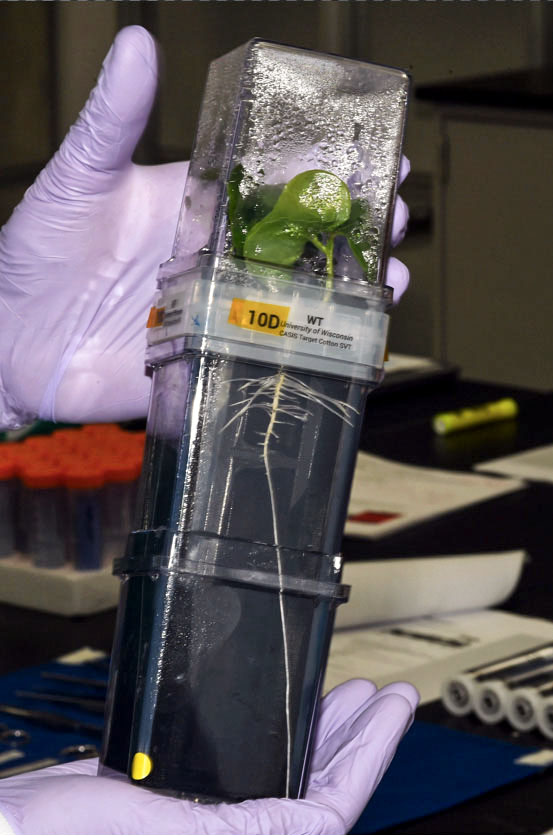First time cotton experiment aboard the ISS aims to make discoveries to support sustainable agriculture on Earth.
Cotton is one of the world’s most profitable and widespread non-food crops. Almost half of all textiles are made from cotton, making it one of the most in-demand crops on the global market. The increasing demand for cotton comes with environmental challenges, many of which are associated with the crop’s water requirements. According to studies by the WWF (World Wide Fund For Nature), cotton has been found to be one of the largest users of water among all agricultural commodities. On average, it takes about 2,700 liters of water to grow the cotton needed for one t-shirt. In order to produce 1 kilogram of cotton, 10,000 liters of water are required; with global annual cotton production needing about 250 billion tons of water.

A team of researchers from the University of Wisconsin-Madison’s Gilroy Lab are set to launch cotton plants to be grown aboard the ISS for the first time in the upcoming SpaceX 22 re-supply mission. Their research will examine environmental factors and genetic expression associated with seedlings grown in a microgravity environment (weightlessness). This experimental mission, funded by global retailer Target, is called TICTOC (Targeting Improved Cotton Through Orbital Cultivation), and it aims to help scientists understand how to more efficiently grow this very thirsty crop.
Producing tougher and more sustainable cotton.




Under certain stress conditions, cotton plants have been observed to develop enhanced root systems that not only make them them resistant to stressors, such as drought, but also more efficiently take in water while also producing 20% more cotton fibers. Roots play a central role in plant stress resistance and survival, but their growth patterns depend upon gravity. TICTOC could help define which environmental factors and genes that control root development associated with plant resilience, water-use efficiency, and carbon sequestration in a microgravity environment.
“We are hoping to reveal features of root system formation that can be targeted by breeders and scientists to improve characteristics such as drought resistance or nutrient uptake, both key factors in the environmental impacts of modern agriculture…..We want to understand how gravity influences the development of the root system of cotton……Cotton uses huge amounts of water and huge amounts of nutrients. And that’s basically a root system thing. Maybe there are elements related to gravity sensing that we could tweak on Earth to redesign the root system to make it more efficient.” says principal investigator Dr. Simon Gilroy.
The cotton seeds will germinate and grow for six days aboard the ISS. While the seedlings are growing, astronauts will photograph their roots to capture information about their size, shape and direction of growth. Once the experiment ends, astronauts will freeze the seedlings and prepare them for delivery back to Earth. The same experiment will run at the same time at the Gilroy Lab. This will allow the opportunity to compare patterns in root growth, and root-associated gene expression between the Earth and space grown specimens.
This experiment will include two different types of cotton. “We’re flying regular cotton, but we’re also flying cotton that is genetically engineered to produce a protein that, on Earth, makes cotton more resilient to a big spectrum of stresses. That protein on Earth is switched on under low-oxygen environments. Our prediction is that the overexpression line will grow better in space,” says Gilroy.
Live coverage of the Spacex 22 launch from Pad 39A from NASA’s Kennedy Space Center will air on NASA Television, the NASA app, and the agency’s website on June 3 at 1 p.m. ET with liftoff at 1:29 p.m. ET. The prelaunch news conference will be live at 1:30 p.m. ET on Wednesday, June 2.
Let’s grow cotton in space!
